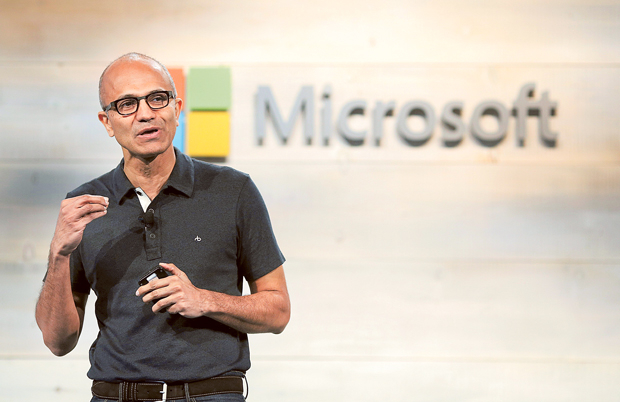
San Francisco: Microsoft on Monday reported that its quarterly profit dipped but revenue increased in a sign that it is adapting to lifestyles centred on mobile devices and cloud services.
Bright spots during the three-month period ending December 31 included rising sales of Microsoft devices such as Surface tablets, Lumia smartphones, and Xbox One video game consoles.
Meanwhile, money made from licensing Windows software to computer makers and businesses slipped as revenue from subscriptions in the cloud jumped.
“The overall goal of having more customers every quarter moving to the cloud is actually a structural guide post we have on a multi-year journey,” Microsoft chief financial officer Amy Hood said.
People and businesses renting Microsoft programmes as online services instead of buying software outright means less money up front but the potential to make more profit over time through subscriptions and sales of premium features.
The US technology titan’s overall quarterly earnings were in line with expectations, but shares lost ground.
Microsoft shares were down slightly more than four per cent to $44.98 (Dh165) in aftermarket trading that followed release of the earnings figures.
Chief executive Satya Nadella touted the quarterly results as evidence Microsoft is on course in adapting to “cloud first, mobile first” lifestyles after building its empire on selling packaged software for computers.
“I am encouraged by the progress we are making in our transformation,” Nadella said during an earnings call.
Profit fell 10 per cent from a year ago to $5.9 billion while revenue hit $26.5 billion in the quarter ended on December 31.
Microsoft noted that earnings in Japan and China fell particularly short of expectations. Challenges in Japan centred on economic conditions there.
Microsoft said it was working through “a set of geopolitical issues” in China but had pockets of growth in that country.
Microsoft executives forecast that this year it would see revenue declines in China, Japan, and Russia.
In the recently ended quarter, revenue from business cloud services including Office 365 and Azure more than doubled to hit an annualised rate of $5.5 billion.
Meanwhile, subscriptions to home versions of Office 365 and Personal climbed more than 30 per cent to 9.2 million.
“We again saw enthusiasm and demand around our cloud offerings,” said Microsoft chief operating officer Kevin Turner.
“Our sales engagement worldwide continues to focus on helping customers and partners transition to the cloud.”
Microsoft’s Bing saw its share of the US online search advertising market grow to just shy of 20 per cent, and sales of Xbox video game consoles climbed to a total of 6.6 million units due to strong performance during the year-end holiday season, according to Microsoft.
Revenue from sales of Surface tablets and accessories rose 24 per cent to $1.1 billion in the quarter.
The gains helped offset a 13-percent drop in revenue from licensing of the Windows operating system, which has long been a mainstay at Microsoft.
Microsoft pulled back the curtain last week on the upcoming Windows 10 operating system focused on seamlessly connected devices such as computers, tablets and smartphones.
“We are taking bold steps forward across our business, and specifically with Windows 10, to deliver new experiences, new categories, and new opportunities to our customers,” Nadella said.
Microsoft hopes Windows 10 will renew its relevance in an age of mobile computing dominated by Apple and Google-backed Android software.
And in order to boost its take-up by the approximately 1.5 billion people around the world who use Windows-powered computers, Microsoft will in a change of policy allow free upgrades.
The broad vision, Nadella explained, is to make sure people can get to Microsoft cloud services from whatever gadgets they wish.
Microsoft also unveiled its virtual reality headgear called HoloLens that will debut with Windows 10 later this year.
HoloLens was touted as an entry to “the world’s first holographic computing platform” which enables users to place three-dimensional holograms in the physical world.










